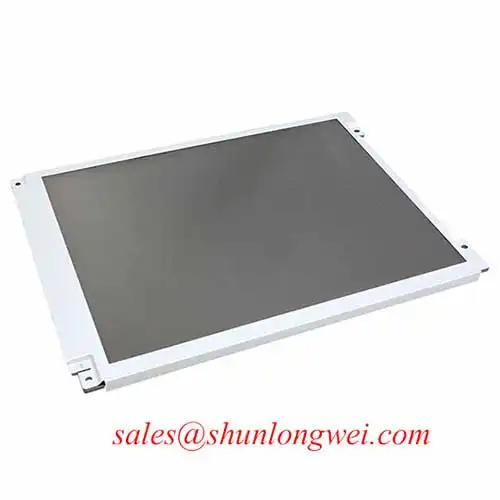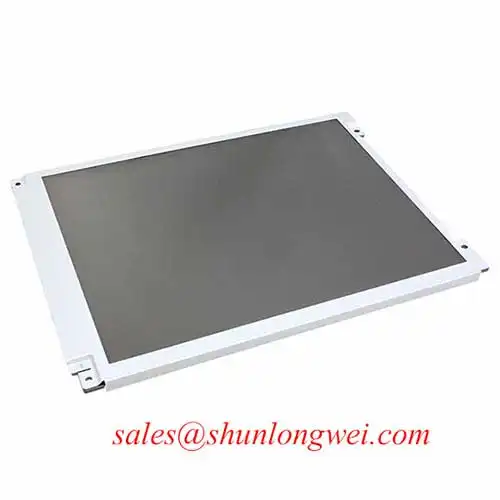Content last revised on November 21, 2025
LG Display LM200WD4-SLB2: An Engineer's Guide to this 20.0-inch HD+ LCD Module
The LG Display LM200WD4-SLB2 is a 20.0-inch a-Si TFT-LCD module designed for performance and straightforward implementation in commercial and industrial systems. It delivers a strategic combination of resolution, interface compatibility, and visual quality, centered on its core specifications of 1600x900 HD+ Resolution | 1000:1 Contrast Ratio | LVDS Interface. This design provides two primary engineering benefits: streamlined system integration and reliable, consistent visual output. It directly addresses the need for a widescreen display with greater pixel density than standard HD without incurring the data overhead of Full HD. For systems requiring a cost-effective, high-quality widescreen display for user interfaces or information dashboards, the LM200WD4-SLB2's feature set offers an optimal integration path.
Application Scenarios & Value
System-Level Benefits in Commercial and Industrial Displays
The LM200WD4-SLB2 is engineered for applications where visual clarity and ease of integration are paramount. For designers of All-in-One (AIO) PCs and specialized industrial monitors, this display provides a significant advantage. Its 1600x900 HD+ resolution offers a wider aspect ratio and more detailed workspace than common 1366x768 panels, allowing for more complex user interfaces or side-by-side document viewing without requiring the system resources needed for Full HD. The integration is further simplified by its standard LVDS (2 ch, 8-bit) interface, a mature and widely supported technology that ensures compatibility with a vast range of off-the-shelf controller boards and embedded systems. This reduces development cycles and minimizes potential electromagnetic interference (EMI), a critical consideration in sensitive industrial environments. The panel’s typical brightness of 250 cd/m² and a high 1000:1 contrast ratio ensure that content is sharp and legible under typical indoor lighting conditions, making it a reliable choice for factory HMIs, medical desktop displays, and information kiosks. For applications demanding higher pixel density, the related LM215WF3-SLA1 offers a Full HD (1920x1080) resolution in a 21.5-inch form factor.
Key Parameter Overview
Decoding the Specs for Integration and Performance
The technical specifications of the LG Display LM200WD4-SLB2 are tailored for a balance of performance and implementation efficiency. The following table highlights key parameters and their direct engineering implications.
| Specification | Value | Engineering Value & Interpretation |
|---|---|---|
| Screen Size | 20.0 inch | Provides a substantial viewing area suitable for desktop and kiosk applications where information density is key. |
| Resolution | 1600(RGB)×900, HD+ | Offers a 16:9 widescreen aspect ratio with higher detail than 720p, ideal for displaying detailed GUIs and productivity software. |
| Panel Technology | e-IPS, Normally Black | e-IPS technology provides superior color accuracy and wide viewing angles. The "Normally Black" characteristic means pixels are black in their off state, leading to deeper blacks and a higher contrast ratio. |
| Viewing Angle | 89/89/89/89 (L/R/U/D) | Symmetrical and extremely wide viewing angles ensure consistent image quality for multiple viewers from various positions, critical for collaborative or public-facing displays. |
| Contrast Ratio | 1000:1 (Typ.) | This high ratio ensures a clear distinction between light and dark areas, resulting in sharp text and vibrant images. It's the difference between a washed-out grey and a true, deep black. |
| Signal Interface | LVDS (2 channel, 8-bit) | A robust and well-established interface that simplifies connection to host systems. It's like a universal highway for video data, ensuring compatibility and reliable signal integrity. |
| Backlight System | WLED, 30,000 hours (Min.) | An energy-efficient White LED edge-lighting system provides uniform brightness and a long operational lifespan, reducing maintenance requirements. |
| Surface Treatment | Antiglare, Hard coating (3H) | The antiglare finish diffuses ambient light to reduce reflections, enhancing viewability, while the 3H hard coating provides essential scratch resistance for durability. |
Download the LM200WD4-SLB2 datasheet for detailed specifications and performance curves.
Application Vignette
Accelerating Industrial HMI Development
An engineering team is tasked with developing a new Human-Machine Interface (HMI) for a manufacturing control system, facing tight deadlines and budget constraints. The key challenge is to create a user interface that can display complex process schematics and real-time data clearly, while using a readily available industrial PC platform. The team selects the LM200WD4-SLB2. The 1600x900 HD+ resolution proves to be the perfect middle ground; it provides enough screen real estate to visualize an entire production line segment without the need for constant scrolling, an improvement over legacy 1024x768 panels. More critically, the display's standard LVDS interface acts as a plug-and-play solution with their chosen single-board computer, eliminating the need for custom interface hardware or complex driver development. This choice directly translates to reduced non-recurring engineering (NRE) costs and shaves weeks off the project timeline, enabling a faster launch of a more effective control system.
Frequently Asked Questions
What is the significance of the 1600x900 HD+ resolution for system design?
The HD+ resolution provides approximately 20% more pixels than standard HD (1366x768), offering a tangible increase in screen real estate for displaying application windows, toolbars, and data. This allows for more effective user interfaces without the higher bandwidth and processing demands of Full HD (1920x1080), making it an optimal choice for cost- and performance-balanced systems.
How does the LVDS (2 ch, 8-bit) interface simplify integration?
LVDS is a highly standardized, low-noise differential signaling interface. Its widespread adoption means that a vast ecosystem of controller boards, drivers, and cable assemblies are readily available. This simplifies the hardware design process, reduces EMI, and accelerates time-to-market compared to more proprietary or complex interfaces. For more information on this interface, see this technical overview on the LVDS Interface.
Are the 89/89/89/89 viewing angles suitable for collaborative workstations?
Absolutely. These symmetrical, wide viewing angles, characteristic of IPS-type technology, ensure that colors and contrast remain consistent even when viewed from significant off-axis positions. This is critical for applications where multiple users may be viewing the screen simultaneously, such as in a control room or a medical consultation setting.
What type of backlight driver is required for the WLED system in the LM200WD4-SLB2?
The datasheet specifies that the panel is supplied without a backlight driver. Engineers will need to integrate an external constant-current LED driver board designed to supply the specified voltage and current for the 4-string WLED backlight system, ensuring stable brightness and maximizing the panel's 30,000-hour minimum lifespan. What is the benefit of its e-IPS panel technology? It delivers superior color accuracy and wide viewing angles.
Does the antiglare surface treatment impact performance in high ambient light environments?
Yes, positively. The antiglare surface is specifically designed to scatter reflections from overhead lighting or windows. This significantly reduces glare and improves screen readability in brightly lit environments, which is a crucial requirement for industrial and commercial settings where lighting conditions are not always controllable. Does the antiglare finish reduce brightness? No, it enhances viewability by minimizing distracting reflections.
An Engineer's Perspective
The LG Display LM200WD4-SLB2 is a pragmatic choice for system designers who prioritize reliability and development speed. It avoids unnecessary complexity by focusing on proven, high-quality core technologies: a capable e-IPS panel, a practical HD+ resolution, and the industry-standard LVDS interface. This component is not about pushing the boundaries of display technology but about providing a robust, dependable, and easily integrated visual solution that allows engineering resources to be focused on the core application rather than on display integration challenges. It represents a solid foundation for any mid-range industrial or commercial display system.


